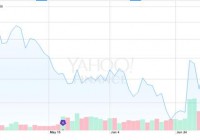4 ETFs In Focus As Iran Reaches Nuclear Deal
The tension in the Middle East has eased following the historic nuclear deal between Iran and world powers. After decade-long negotiations, the Islamic Republic is ready to back down the development of nuclear weapons for over a decade in exchange for relief in oil sanctions imposed in the late 2000s. This seems to be a major development for Iran, the U.S. and the six world powers. The deal would open the doors for international oil and gas giants like Royal Dutch Shell (NYSE: RDS.A ), Total S.A. (NYSE: TOT ) and Eni SpA (NYSE: E ), previously barred under sanctions, to invest in the Iranian oil and energy sector thanks to Iran’s huge oil reserve. This is especially true as Iran is the world’s fourth-largest reserve holder of oil with 158 billion barrels of crude oil, according to the Oil & Gas Journal . Notably, it accounts for almost 10% of the world’s crude oil reserves and 13% of reserves held by the Organization of the Petroleum Exporting Countries (OPEC). On the other hand, any relaxation in sanctions would boost Iranian oil exports and production, adding to the global supply glut. However, it will take at least six months for the sanctions to be lifted due to vast legislative procedure involved in the historic deal. Additionally, the relief to oil sanctions will be gradual when it starts and thus could take years or more for Iran to increase oil production significantly or fully ramp up its export capacity. As per Fitch Ratings, Iranian oil production will increase in 2016 but will take a number of years to reach its previous peak. Iran currently exports about 1.1 million barrels per day, which more than halved from 2.6 million barrels per day exported in 2011. The development has put the spotlight on many corners of the investing world with investors keeping a close eye on them for the coming days. In particular, crude oil price has seen huge volatility following the historic nuclear deal. Crude price slumped as much 2.3% on the day but bounced back later to settle 1.6% higher at the close. As a result, we have highlighted four ETFs, which are especially in focus in the wake of nuclear deal: United States Brent Oil Fund (NYSEARCA: BNO ) Oil ETFs which directly deal in the futures market will be on the top of investors’ list. While there are many, the focus would be on Brent crude oil that serves as a major benchmark of oil worldwide instead of WTI, which is more of a benchmark for American prices. The fund provides direct exposure to the spot price of Brent crude oil on a daily basis through future contracts. It has amassed $95.4 million in its asset base and trades in good volume of roughly 215,000 shares a day. The ETF charges 75 bps in annual fees and expenses. BNO gained 0.5% on Tuesday trading session and is down about 9% in the year-to-date period. SPDR S&P Oil & Gas Exploration & Production ETF (NYSEARCA: XOP ) As Iran is expected to increase oil production after sanctions are lifted, a closer look at the exploration and production sector is warranted. XOP is one of the largest and popular funds in the energy space with AUM of $1.7 billion and expense ratio of 0.35%. It trades in heavy volume of more than 9.7 million shares a day on average. This fund provides an equal-weight exposure to 75 firms by tracking the S&P Oil & Gas Exploration & Production Select Industry Index. None of the firms accounts for more than 1.84% of the total assets. The product is skewed toward small cap securities, as these account for 56% share in the basket, while the rest is almost evenly split between large and mid caps. The ETF surged 3% on the Iran deal but is down 4.8% so far in the year. iShares U.S. Aerospace & Defense ETF (NYSEARCA: ITA ) A nuclear agreement could be a boon for the U.S. defense sector, as it will prompt the Mideast partners to seek improved defense systems from American contractors. While there are other two quality options in the defense space – PPA and XAR – ITA will garner huge investors’ interest for its liquidity and AUM. The fund follows the Dow Jones U.S. Select Aerospace & Defense Index and holds 36 stocks in its basket. It allocates higher weights to the top two firms – Boeing (NYSE: BA ) and United Technologies (NYSE: UTX ) – at over 8% share each. Other securities hold no more than 6.70% of total assets. The fund has accumulated $533.6 million in AUM while charges 44 bps in fees a year. The product is up 0.6% on Tuesday trading session and 6.4% so far this year. Market Vectors Gulf States Index ETF (NYSEARCA: MES ) The deal could be the game changer for the Middle East, as it would make the relationship with the Western countries smoother with increased investments, new business, and a pickup in other economic activities. Given this, MES having AUM of just $15.3 could be potential winner in the coming years. The fund provides exposure to the 63 largest and most liquid stocks in the Gulf region by tracking the Market Vectors GDP GCC Index. Emaar Properties, Qatar National Bank and National Bank of Kuwait occupy the top three spots with at least 6% share each. Other firms hold no more than 4.3% of total assets. From a sector look, financials dominates the portfolio with 66.7% share while industrials and telecom round off the next two spots with double-digit exposure each. The ETF charges 99 bps in annual feeds and trades in a paltry volume of about 6,000 shares. The fund added 1.3% on the day and over 4% in the year-to-date time frame. Original Post
